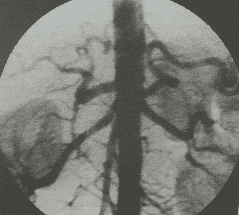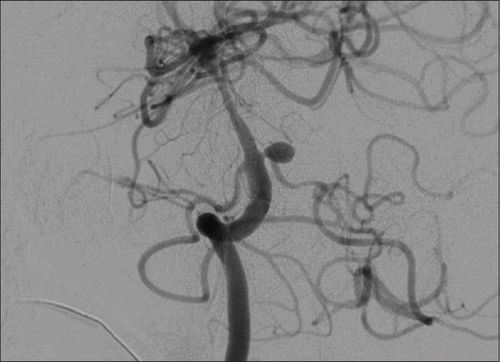This is an automatically translated article.
The article was professionally consulted by Specialist Doctor I Tran Cong Trinh - Radiologist - Radiology Department - Vinmec Central Park International General Hospital.Radiofrequency ablation for lower venous insufficiency is a method that is being applied more and more widely to improve the quality of life of patients with lower venous insufficiency today.
1. What is lower venous insufficiency? Causes of lower venous insufficiency
Inferior venous insufficiency is a condition in which the lower venous system's blood flow to the heart is impaired, causing blood stagnation in the lower legs and then spreading up gradually. As a result, patients have signs such as heavy legs, pain in the lower limbs, cramps, blue tendons along the shins, edema, itchy skin, ... This stagnation will get worse and worse for a long time. causes many dangerous complications that are difficult to treat such as leg ulcers, vascular occlusion or vasculitis... if not treated properly and promptly.The cause of lower venous insufficiency is often due to lack of muscle movement. In particular, the possibility of having lower venous insufficiency is very high for people whose work is forced to stand or sit for a long time, sedentary to exercise the calf muscles such as: office workers, teachers, etc. medical staff, sales staff, workers...
Women often have a higher risk of venous insufficiency than men (3 - 4 times higher), the reason is due to the influence of hormones , pregnancy on the walls of veins or from standing in one position for a long time in certain occupations (eg sales) or using shoes that are not suitable for the feet.

Ngồi nhiều, ít vận động là nguyên nhân gây suy tĩnh mạch dưới
2. Methods of treating venous insufficiency of the lower extremities by high-rise ablation
In the past, to treat venous insufficiency of the lower extremities, people often used the main factor of reflux of the great saphenous vein and applied the surgery of ligation and squeezing (stripping) of the vein. However, this method has a high recurrence rate (nearly 30% after 5 years). Therefore, today's medicine has researched and applied other more effective methods, namely the use of high-frequency ablation, digital imaging to erase the background.2.1. Radiofrequency ablation for the treatment of lower venous insufficiency
By using high-frequency heating waves to cause fibrosis of the saphenous vein system, thereby cutting off the reflux currents from the deep veins to the superficial veins, this technique uses a cable capable of emitting heat from the deep veins. High-frequency waves, inserted into the vein, then rely on heat energy to cause fibrosis of the patient's vessel wall.Radiofrequency ablation to treat lower venous insufficiency is contraindicated in the following cases:
Allergy to iodinated contrast; Patients with severe renal failure (grade IV); Acute deep vein thrombosis; Severe coagulopathy (prothrombin index <60%, INR > 1.5, platelet count < 50 G/l); Physical exhaustion; Pregnant women.
2.2. How to conduct treatment of lower venous insufficiency by high-frequency ablation angiography digital background erasure
Vein mapping First, the doctor uses Doppler ultrasound to map the vein to be treated (great saphenous vein) and then uses a pen to draw on the skin the path of the vein, marking the opening points. enter the lumen and end point, as well as mark the dilation sites that need attention.Open the way into the vein The doctor disinfects the entire skin area on the map of the vein and opens the way into the vein (using a 21-25G needle, it is possible to open the way into the vein under the guidance of the doctor). ultrasound or not). Open the access vein downstream (direction from the proximal limb to the proximal limb) and then insert the tube into a vessel with a diameter of 4-5F.
Venography Perform a DSA scan of the entire saphenous vein system with iodinated contrast. Assess the path, anatomical variation of the saphenous vein system as well as the location of the femoral vein entry.
Next, approach the great saphenous vein and insert the heating wire through the tube into the lumen into the lumen of the great saphenous vein. Under the guidance of ultrasound and DSA, the doctor inserts the end of the heating wire to about 1cm away from the place of pouring of the great saphenous vein into the femoral vein, then stops.
In case it is difficult to bring the heating wire to the saphenous vein, the doctor can use the microcatheter and the lead to go first under the guidance of digitized background erasure with contrast injection, then Insert the heating wire through the catheter.
Pain relief around the veins Use 20 - 50ml of Lidocaine solution diluted 0.1% with physiological saline, pumped into the soft tissue around the great saphenous vein under the guidance of ultrasound.
In addition, epinephrine can be mixed with an appropriate dose to enhance the vasoconstrictor effect (the volume of Lidocaine dilution 0.1% is about 4.5mg Lidocaine/kg body weight).
After the anesthesia around the vein is completed, it is necessary to perform an ultrasound to check the position of the heating wire, the level of uniformity of the tissue around the vein to ensure the connection of the heating wire. with a heat source (RF generator), then conduct heating of the great saphenous vein from downstream to upstream (from the base of the limb to the tip of the limb).
The speed of movement of the heating wire depends on the parameters and the degree of varicose veins of the legs.
End of procedure After burning the entire great saphenous vein, in turn, withdraw the heat conductor from the path into the vessel lumen, withdraw the tube into the lumen and proceed to apply pressure bandages to close the path into the lumen.

Phụ nữ mang thai chống chỉ định thực hiện
2.3. When is this treatment considered successful?
After the end of the procedure, the great saphenous vein will be fibrous, completely collapsed from the opening position to the saphenous vein loop.The saphenous vein will completely fibrosis after 4 - 7 days. There was no fibrosis and thrombosis of the femoral vein.
3. Notes to know when using the method to treat lower venous insufficiency
There are two important caveats to know about the complications of this procedure:Deep vein thrombosis: A rare complication, usually due to the location of the treatment being too close to the femoral vein. The doctor will give the patient systemic or local thrombolytic therapy. Burns of the skin: usually due to the use of too high heat, causing anesthesia around the irregular pulse. This case requires only medical treatment and local care. The method of high-frequency ablation for treatment of lower varicose veins has a high success rate, thoroughly treats the insufficiency of the veins, is safe, has few complications, and is aesthetically pleasing.
DSA is an imaging technique performed at Vinmec International General Hospital. Accordingly, the people who perform this technique are all good, professional doctors with many years of experience in the profession, which will bring optimal treatment results to customers.
In addition to effective diagnosis and treatment of diseases, today to improve quality, Vinmec also deploys accompanying medical services at the request of customers. Specifically with venous insufficiency, Vinmec currently has a package of examination for lower extremity venous insufficiency. When using this service package, customers will have a comprehensive examination, specialized in Cardiology, using modern imaging facilities and related tests.
Before taking a job at Vinmec Central Park International General Hospital, the position of Doctor of Radiology from September 2017, Doctor Tran Cong Trinh worked at Gia Dinh People's Hospital since 2007. -2017. In his role, Dr. Tran Cong Trinh has participated in guiding the teaching of students, residents, specialists and new doctors entering the department
For examination and treatment at International General Hospital Vinmec, please come directly to Vinmec Health System or register online HERE.













